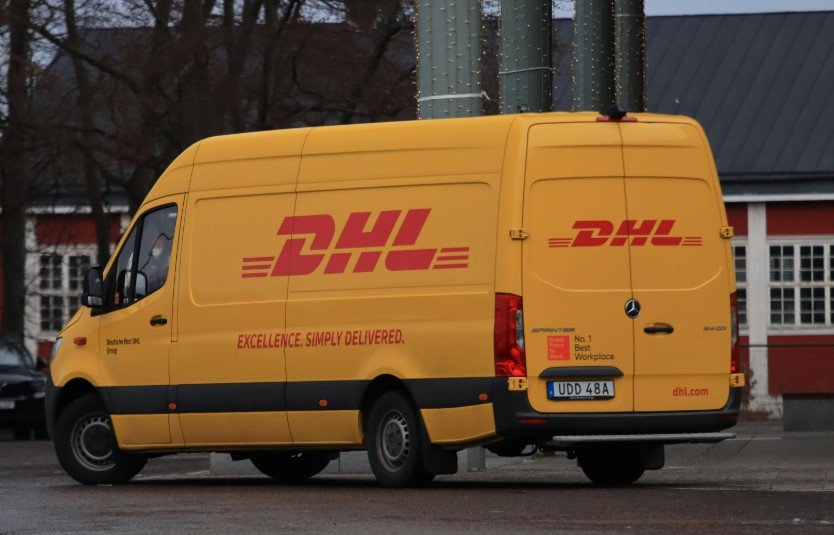DHL has announced it will suspend shipments of goods worth over $800 to U.S. consumers, a move that could impact both retailers and customers alike. The decision, which comes amidst mounting logistical challenges, could redefine the way businesses engage in cross-border trade with the U.S.
The Suspension Explained
In a significant shift, DHL has confirmed that it will halt the shipment of international parcels exceeding $800 in value to U.S. consumers. The company cites rising operational costs and complex regulatory challenges as primary reasons for the suspension.
This move affects a wide range of businesses, from small online retailers to major international brands who have relied on DHL’s services for fast, reliable delivery. For these businesses, the suspension presents an immediate disruption that could force them to look for alternative carriers or adjust their shipping strategies.
What This Means for Consumers
For U.S. consumers, the suspension could lead to delays or the cancellation of international orders. Shoppers who routinely purchase goods from abroad may find themselves either waiting longer for shipments or being forced to seek out new shipping options.
It’s a headache for shoppers, especially those accustomed to fast, efficient deliveries that DHL is known for. Whether it’s the latest tech gadgets, luxury items, or clothing from international brands, consumers may find themselves facing longer wait times or higher costs as businesses work to find solutions.

Impact on E-Commerce and Retail
Retailers who import goods for resale in the U.S. are also facing potential disruptions. Many e-commerce platforms and online marketplaces, particularly those that cater to niche, international products, could see delays in their ability to stock popular items.
For businesses that thrive on quick turnarounds, this is more than just a logistical challenge—it’s a strategic issue. Retailers who fail to adjust quickly might see a drop in consumer confidence, and ultimately, in sales. Some may even need to restructure their pricing models to absorb the extra cost or find new ways to streamline their shipping.
The Root Causes Behind DHL’s Decision
DHL has attributed the suspension to a series of mounting obstacles, from rising shipping costs to increased customs scrutiny. The company has faced numerous logistical hurdles as global trade continues to rebound from the pandemic.
Higher tariffs, fluctuating fuel prices, and staffing shortages in key regions have added layers of complexity to the already challenging task of moving goods across borders.
At the same time, increased regulatory scrutiny by U.S. authorities has made it more difficult for carriers to maintain smooth and timely deliveries. Customs and border security measures have tightened, requiring more documentation and inspection, which can delay shipments.
In the face of these pressures, DHL’s decision to suspend these high-value shipments might be seen as a necessary adjustment to keep operations viable and profitable.
Potential Long-Term Effects
While the immediate impact of the suspension is clear, the longer-term consequences could be even more significant. As the global logistics network continues to evolve, businesses will need to adapt to these shifting realities. In the short run, customers and companies alike will face challenges.
However, it’s not just DHL that will need to adjust. Other major logistics providers may also re-evaluate their pricing models and service offerings as a result of these changes. The future of international shipping to the U.S. could look very different if more companies follow DHL’s lead.
The Broader Economic Context
DHL’s decision also fits within a larger global economic context. Shipping giants around the world have been forced to re-think their strategies in response to a variety of economic pressures. The rise of e-commerce, combined with supply chain disruptions and economic uncertainty, has forced shipping companies to make tough decisions.
Many experts predict that similar moves could be made by other logistics companies if the pressures outlined by DHL continue. The impact of these changes, however, could be felt by both consumers and businesses, who rely heavily on the speed and affordability of global shipments.
What’s Next for U.S. Consumers and Retailers?
For now, U.S. consumers can expect potential delays in receiving items over $800. Retailers will need to consider how they can mitigate these disruptions, whether by adjusting shipping strategies or by working with alternative carriers.
In the coming weeks, the full scope of the suspension’s impact will become clearer, but the immediate takeaway is that consumers will likely experience delays, and retailers will face a new set of challenges in navigating the evolving global shipping landscape.
